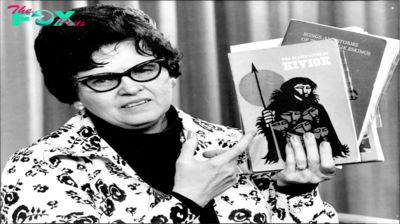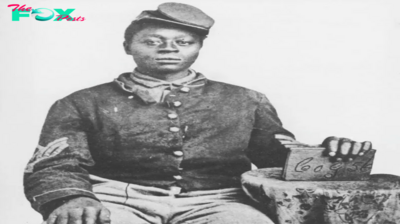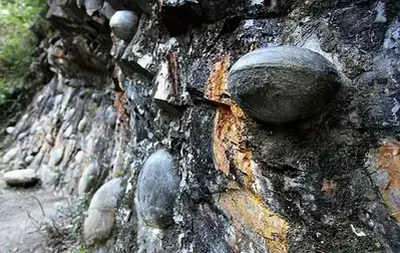History
The Huge Treasure Of The Beautiful Princess Sit-Hathor Yunet - The Beloved Daughter Of The King Of Egypt
In 1914, the assistant to the famous Egyptologist William Flinders Petrie, Guy Brunton, discovered in the Egyptian necropolis of El-Lahun, one of the most splendid sets of gold jewelry ever found in Egypt. Egypt and belonged to one of the daughters of Pharaoh Senusret II. .....
Between 1889 and 1890, the great British Egyptologist Sir William Flinders Petrie was in Egypt, commissioned by the British School of Archeology, discovering the pyramid of Pharaoh Senusret II (1845-1837 BC) in el -Lahun (burial place that he even went to infiltrate).

Illustration
But in the end, the researcher had to leave without completing his exploration and was not able to return to the site until many years later, in late 1913.
In fact, his intention on this second visit was to study some of the side tombs located next to the site, the royal pyramid.

Illustration
In early 1914, Petrie then began examining the foundation around the Pyramid of Senusret, and there he was able to locate various tombs inside a series of wells, albeit unfortunately they are empty; most were looted in ancient times.
Gold, gold and more gold
During this exploration, Petrie discovered a new, a priori well that was not as promising as the others. But to make sure it didn’t contain anything of interest, the Egyptologist asked his assistant, Guy Brunton, to go down inside it, who upon entering discovered that there really wasn’t. there’s much more to see.

Illustration
What he was able to verify was that it was the tomb of a princess, possibly the daughter of Senusret II.
Brunton disappointedly noted that the woman’s mummy had been torn to pieces by ancient looters in search of amulets hidden in her linen bandages, but could be identified. got her identity thanks to her name engraved on the jars that are still there. Tomb: That is Princess Sit-Hathor-Yunet.
Frustrated, he was about to return to the water when he noticed that in one corner of the tomb there was a hole filled with mud.

Brunton began to carefully dig in the mud, and suddenly something glowed in the dark. His heart missed a beat: It was gold. Brunton immediately informed Petrie that he decided to excavate the hole immediately.
The excavation of an 8-inch cavity filled with solidified clay in the tomb of that ancient princess has provided archaeologists with one of ancient Egypt’s most magnificent treasures, a set of jewels. The incredible Middle Kingdom (1980-1760 BC) is kept in a few ebony chests, which have been damaged by the effects of water and millennia.
From the mud emerged beads and more gold, solid gold tubes, cosmetics, mirrors, vases, bracelets, necklaces… and even a golden crown and two bras. (one named Senusret II and another named Amenemhat III). All this has an exquisite quality.
Petrie described the hard work his assistant did on the tomb as follows:
“For a week, Brunton spent day and night in the tomb, taking objects out of the clay without bending or breaking anything. He excavated each piece and washed it with water and with a camel hair brush so as not to damage the surface. Then I will take pictures of them.”

The golden crown was found in the tomb of Princess Sit-Hathor Yunet, in El-Lahun. Egyptian Museum, Cairo.

Senusret II’s chest….
In this chest, hieroglyphic markings make up the design and can be read in its entirety: “The God of the Rising Sun gives life and dominion over all that the Sun surrounds for one million one hundred thousand years [meaning] is eternal]. to King Khakheperre (Senusret II). This gem is inlaid with 372 pieces of semi-precious stones.

Princess Name: The Canopic Vase was discovered in the tomb of Princess Sit-Hathor Yunet, where her name can be read.

A wooden jewelry box

Two of the boxes found in Sit-Hathor Yunet’s tomb appear to have housed her ceremonial wigs.
The wooden boxes and hair have been completely decomposed, but 1,251 gold rings that once decorated one of the wigs are still preserved. Today, they have been recreated into a modern wig in an arrangement suggested by experts at the Metropolitan Museum.

This gorgeous ring is made of gold and the beetle’s wings, chest, and head are inlaid with semi-precious stones.
During the Middle Kingdom, the beetle was the preferred design for the bezel, as this insect, a sun symbol, was a very popular amulet. The bottom of the bezel of this ring doesn’t have any inscriptions.

A gold and amethyst lion bracelet and clawed anklet owned by Princess Sit-Hathor Yunet.

These wide gold, carnelian and turquoise anklets are part of Princess Sit-Hathor Yunet’s treasure.

Necklace found in the tomb of Sit-Hathor Yunet, made of gold, carnelian, lapis lazuli, blue feldspar and amethyst.

This magnificent jewel was a belt that Sit-Hathor Yunet must have worn around her waist.
It is made of gold, amethyst and diorite. It is made up of beads made of these stones and the two leopards, both large and small, are made of gold.
-

 History3h ago
History3h agoEven George Washington Was a Tyrant
-

 History19h ago
History19h agoWhat Democrats Can Learn from America’s First Black Voters
-

 History1d ago
History1d agoHow Celebrities Changed America’s Postpartum Depression Narrative
-

 History2d ago
History2d agoThe Woman Whose Crusade Gave Today’s Book-Banning Moms a Blueprint
-

 History6d ago
History6d agoHow Black Civil War Patriots Should Be Remembered This Veterans Day
-

 History1w ago
History1w agoThe Democratic Party Realignment That Empowered Trump
-

 History1w ago
History1w agoWhy People Should Stop Comparing the U.S. to Weimar Germany
-

 History1w ago
History1w agoFlorida’s History Shows That Crossing Voters on Abortion Has Consequences



























